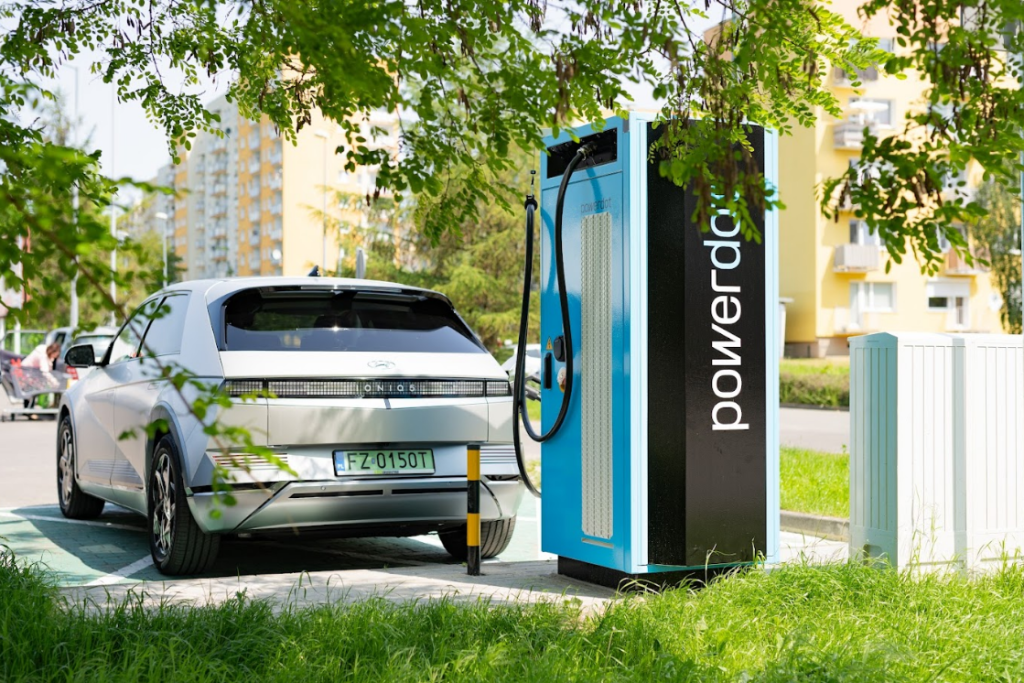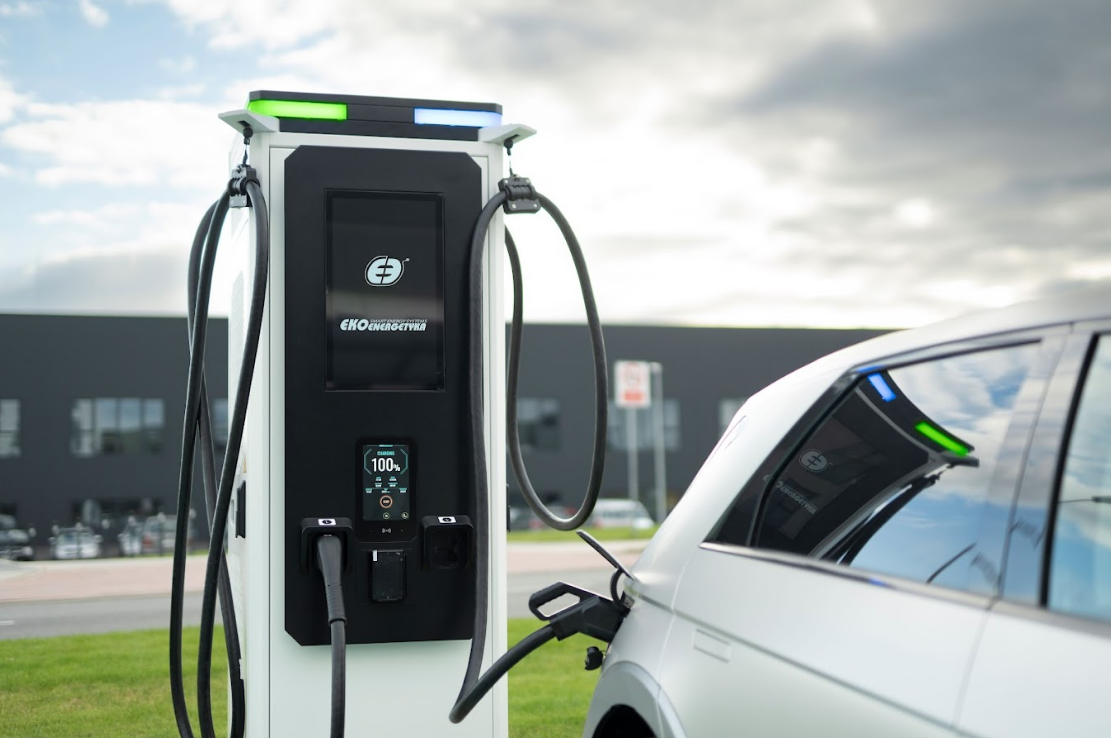Plug in and charge. Simple, right? Behind that seemingly straightforward action lies one of modern engineering's most sophisticated power delivery systems. Electric vehicle charging stations represent the convergence of power electronics, digital communication, and smart grid technology – a complex ecosystem designed to deliver electricity safely and efficiently to your vehicle's battery.
The charging process involves a precise interaction between vehicle and station: a very carefully orchestrated exchange of digital signals, power monitoring, and real-time adjustments. While the user experience remains straightforward – plug in and walk away – the underlying technology manages a elaborate series of operations to ensure optimal charging performance.
Types of EV Charging Stations
Not all electric car charging stations deliver power equally. The three primary charging levels all serve different purposes:
- Level 1 (2.3 kW): Using standard 230V household power. Very slow but universal.
- Level 2 (7-22 kW): Operating on 400V three-phase power. The standard for public charging. Faster than level 1 charging but less powerful than level 3 DC fast charging.
- Level 3 (50-350 kW): DC fast-charging systems. Maximum power, maximum speed. Can charge your EV up to 80% in just 30 minutes.
Level 2 stations are the primary charging solution for personal electric vehicles, particularly in residential settings. They're ideal for locations where cars are parked for a few hours, allowing for a substantial charge during routine stops. This slower, steady charging method aligns well with personal vehicle charging needs, while DC charging infrastructure serves as the backbone for logistics, transport, and commercial fleets.
You'll find level 2 charging stations in:
- Shopping centres
- Parking structures
- Workplace facilities
- Residential complexes
- Public parking areas
Level 3 stations are the backbone of modern commercial transportation and logistics infrastructure, a sector representing a significant portion of European GDP. These high-power systems are crucial for meeting AFIR requirements and achieving ambitious Fit for 55 goals.
While requiring substantial infrastructure investments, level 3 charging stations are essential for commercial fleets, logistics operations, and long-distance transport. They're strategically placed along major travel routes and in dedicated charging hubs, enabling rapid charging that keeps commercial operations running efficiently.
Components of an EV Charging Station
Modern charging stations are marvels of engineering, combining advanced electronics, sophisticated software, and robust safety systems. Each component plays a crucial role in delivering power efficiently and safely to vehicles.
Charger Hardware: Connectors, Charging Cables, and Plugs
The charging connector, while appearing straightforward, contains advanced engineering. European stations utilize several standardized types:
Primary Connector Types:
- Type 2 (Mennekes) - The European standard for AC charging
- CCS (Combined Charging System) - The dominant DC fast-charging standard
- CHAdeMO - An older standard, gradually being phased out
- MCS (Megawatt Charging System) - New high-power standard for heavy-duty vehicles
Each charging cable contains:
- Multiple power conductors
- Ground connections
- Communication pathways
- Safety monitoring systems
- Temperature sensors
Power Supply: AC vs. DC Power
Here's the fundamental challenge: vehicle batteries require direct current power (DC) that flows in one constant direction. However, the grid delivers alternating current power (AC) which changes direction periodically. This discrepancy demands conversion, and different charging levels handle it in distinct ways.
Level 1 and 2 Stations:
- Deliver AC power directly
- Rely on the vehicle's onboard charger for conversion
- Lower cost but limited by vehicle converter capacity
Level 3 Stations:
- Perform AC-to-DC conversion directly within the charging station
- Bypass the vehicle's onboard charger completely
- Deliver up to 350 kW of DC power
- Require complex power electronics and cooling systems
This distinction explains why Level 3 stations can charge so much faster – they're essentially giant power converters capable of delivering more current than any onboard system could handle.
Software & Communication: How EVs and Charging Stations Communicate

The physical connection between the car and the charging station is just the beginning. Modern stations are highly intelligent computers that establish intricate digital dialogues with vehicles. Every charging session involves dozens of data exchanges.
Key Communication Components:
- Open Charge Point Protocol (OCPP) – The industry standard for station-to-network communication
- Power Line Communication (PLC) – Enables data exchange through the charging cable
- Control Pilot – Manages the safe flow of electricity
When you connect your vehicle, a rapid sequence of events unfolds. The station verifies your car's charging capabilities. Your vehicle reports its current battery status. Power delivery adjusts in real-time. It's a constant back-and-forth that happens in milliseconds.
Payment Systems
Gone are the days of simple card readers. Today's charging stations typically offer multiple payment options:
- Mobile apps with stored payment details
- RFID cards for subscription services
- Direct contactless bank card payments
- QR code-based systems
European regulations are pushing for even greater payment accessibility. By 2023, all new high-power charging stations must accept standard debit and credit cards – a significant step toward universal access.
How the Charging Process Works
The moment you plug in your vehicle, a sophisticated dance begins:
- Initial Handshake
- The station validates the connection
- The vehicle reports battery status
- Safety systems activate
- Power Negotiation
- Vehicle requests specific power level
- The station confirms the available capacity
- Charging parameters set
- Active Charging
- Power delivery begins
- Real-time monitoring of:
- Temperature
- Voltage levels
- Current flow
- Battery response
- Charge Management
- Dynamic power adjustment
- Thermal management
- Safety system monitoring
Challenges and Innovations in Charging Station Technology
The rapid evolution of EV charging faces several key challenges. Power grid capacity – sometimes insufficient. Peak demand management - increasingly complex. Installation costs – too often prohibitive. However, all these challenges drive innovation.
Load Management
Smart load management systems perform a delicate balancing act. When multiple vehicles charge simultaneously, available power must be distributed efficiently. Some strategies include:
Dynamic Load Balancing:
- The system continuously monitors and adjusts power allocation in real-time based on current charging needs.
- Advanced sensors track peak demand patterns to optimize power distribution across all connected vehicles.
- Automated scaling mechanisms adjust power delivery to match available grid capacity and prevent overload.
- Cutting-edge protection systems maintain grid stability by preventing sudden power surges or imbalances.
Smart Charging
The future of charging is intelligent. Smart charging systems consider multiple factors:
- Electricity prices
- Grid capacity
- User preferences
- Renewable energy availability
- Local power constraints
They can adjust charging speeds and timing to optimize both cost and grid stability. Your car might charge slower at peak times and faster when renewable energy is abundant.
V2G (Vehicle-to-Grid)
Perhaps the most revolutionary development yet is bi-directional charging. V2G technology transforms EVs from mere power consumers into mobile energy storage units. During peak demand, your car could power your home. During grid emergencies, thousands of connected EVs could stabilize the entire network.
Conclusion
Electric vehicle charging stations represent far more than simple power outlets. They're sophisticated energy management systems combining advanced hardware, intelligent software, and complex communications protocols. As technology advances, these systems continue to evolve - becoming smarter, faster, and more capable.
The future promises even more innovation: wireless charging, ultra-fast power delivery, and intelligent grid integration. Yet the core principle remains simple: delivering power safely and efficiently to the growing fleet of electric vehicles on our roads.
Want to learn more about our advanced charging solutions? Let our experts guide you through Ekoenergetyka's cutting-edge charging technology – contact us today.
